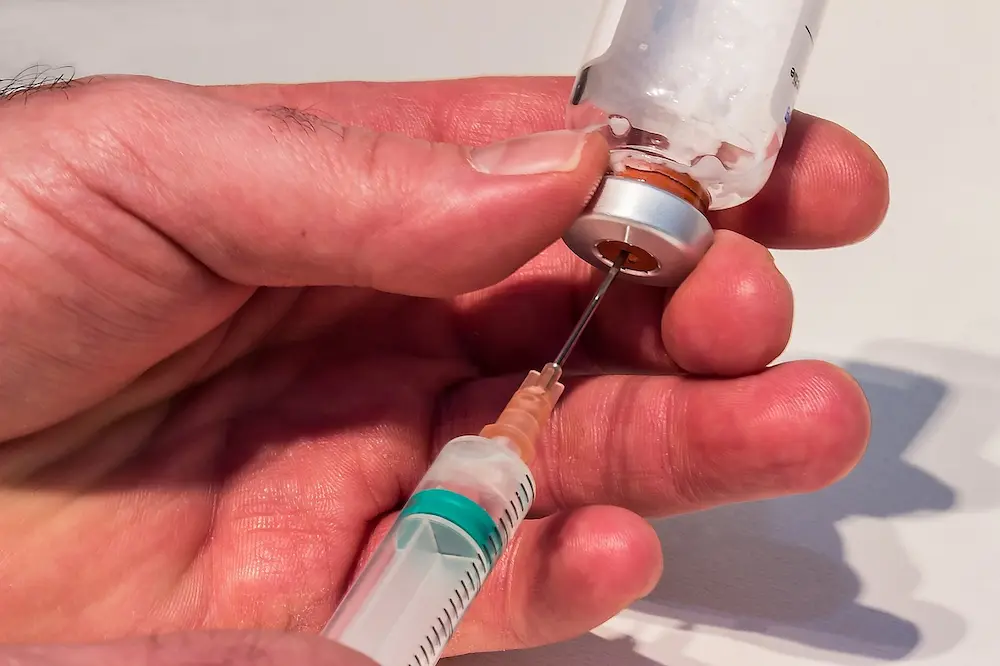Nandrolone, commonly known through its various esters, such as nandrolone decanoate and nandrolone phenylpropionate, has a well-established place in the world of therapeutics. Its use extends beyond its notoriety in performance enhancement, addressing legitimate medical conditions requiring anabolic support. Among its applications, nandrolone is prescribed to manage cases of anemia associated with renal insufficiency and has been used to treat forms of osteoporosis, showcasing its potential in improving bone density and muscle mass.
In medical practice, nandrolone is valued for its relatively favorable anabolic to androgenic ratio, making it a go-to option for conditions necessitating tissue growth and protein synthesis without the extensive side effects associated with stronger androgens. The administration of this medication is carefully tailored to individual patient needs, with dosages adjusted to achieve a therapeutic balance. Although its pharmacological action is beneficial in multiple clinical scenarios, healthcare providers remain vigilant against potential risks and side effects that require monitoring during treatment.
Quick Summary
- Nandrolone has legitimate therapeutic uses, particularly for conditions like anemia and osteoporosis.
- Its favorable anabolic to androgenic ratio makes it suitable for patients needing tissue growth with minimized side effects.
- The administration of nandrolone must be carefully managed to balance therapeutic benefits against potential risks.
General Overview of Nandrolone

Nandrolone is an anabolic steroid with potent androgenic properties that has been used in therapeutic contexts. It is classified as a Schedule III controlled substance due to its potential for misuse and dependency.
Chemical Structure and Properties
Nandrolone, also known as 19-nortestosterone, is a synthetic androgen and anabolic steroid derivative of testosterone. Its structure is characterized by:
- Carbon atom removal at the 19th position
- Double bond between carbon atoms 6 and 7
This modification increases the muscle-building properties of the substance while reducing the androgenic effects compared to testosterone. Nandrolone is commonly available in various ester forms, such as nandrolone decanoate and nandrolone phenylpropionate, which influence its absorption rate and half-life.
Chemical Formula: C18H26O2
Molecular Weight: 274.40 g/mol
Anabolic/Androgenic Ratio: 125:37
Historical Context and Development
Nandrolone was first synthesized in 1950 and later developed for medical use. It became widely recognized in the 1960s and served as a cornerstone in anabolic steroid development.
In clinical settings, nandrolone has been utilized to treat:
- Anemia associated with renal insufficiency
- Osteoporosis in postmenopausal women
- Cachexia and wasting syndromes
The anabolic properties of nandrolone have led to its misuse in sports, contributing to its status as a controlled substance. Despite its potential for abuse, when used under medical supervision, nandrolone maintains a role in therapeutic treatments.
References
Nandrolone Therapeutic Applications

Nandrolone Decanoate, commonly known as nandrolone, serves as an important anabolic steroid used in various medical treatments. The drug is notable for its role in managing specific cases of anemia and osteoporosis, as well as conditions characterized by muscle wasting.
Treatment of Anemia and Osteoporosis
Nandrolone decanoate can effectively treat anemia associated with renal insufficiency. Its mechanism involves the stimulation of erythropoiesis, which leads to an increased production of red blood cells. For postmenopausal osteoporosis, nandrolone is known to enhance bone density. Regular dosage provides a reduction in bone fractures and improvement in bone markers.
- Anemia Treatment:
- Approved: Yes, for anemia related to renal failure
- Dosage: Varies, often given as an intramuscular injection every 3 weeks
- Efficacy: Improves red blood cell count
- Osteoporosis Treatment:
- Approved: Yes, specifically for postmenopausal osteoporosis
- Dosage: Customized to patient needs
- Efficacy: Increases bone density, decreases fracture risk
Muscle Wasting Disorders
For patients suffering from muscle wasting disorders like HIV-associated wasting or cancer cachexia, nandrolone decanoate becomes a crucial prescription. It provides a significant aid in maintaining or increasing muscle mass. This application is particularly relevant due to the limited treatments available for these conditions.
- Muscle Wasting Treatment:
- Approved: Used for AIDS-related muscle wasting
- Dosage: Tailored to individual patient needs, generally a low-dose range
- Efficacy: Helps in muscle growth and maintenance
While nandrolone is not commonly prescribed for use in children, its efficacy in adults has been well-documented. The prescription of nandrolone must always be done under medical supervision to ensure safety and effectiveness.
References
Administration and Dosage

Nandrolone is commonly administered by intramuscular injection with dosage tailored to the individual’s therapeutic needs.
Injection Protocols
Nandrolone decanoate is usually given as an intramuscular injection into the buttocks, thigh, or upper arm. It is important to rotate injection sites to prevent tissue damage. The injections are typically administered in a clinical setting by a healthcare professional.
- Frequency of Injection: Nandrolone decanoate should be injected once every 2 to 4 weeks. However, the exact frequency varies according to the regimen prescribed by the healthcare provider.
- Technique: The intramuscular injection should be deep to ensure proper absorption of nandrolone into the systemic circulation.
Optimal Dosing Strategies
The optimal dose of nandrolone decanoate can vary based on the condition being treated, patient’s body weight, and response to therapy.
- Standard Dosing Range:
- Adult dose for Anemia Associated with Chronic Renal Failure: 50 to 200 mg every 1 to 4 weeks
- Adult dose for Breast Cancer in Females: 50 to 100 mg every 1 to 4 weeks
- Adjusting Dosage:
Blood testosterone levels should be monitored to ensure they stay within therapeutic range. - Cypionate vs. Decanoate: Nandrolone cypionate is another ester of nandrolone that may be used. It typically has a similar dosing schedule but may differ in its rate of absorption and duration of action.
Clinical judgment is crucial in determining the appropriate dosage, taking into account factors such as patient response and potential adverse effects.
Pharmacology

Nandrolone is a synthetic anabolic-androgenic steroid with several therapeutic applications. Its pharmacology is characterized by its mechanism of action and specific interactions with androgen receptors that exhibit tissue selectivity and variations in metabolic responses.
Mechanism of Action
Nandrolone exhibits its effects by mimicking testosterone, the primary male sex hormone, essential for male reproduction and secondary sexual characteristics. Testosterone signals through binding to and activating androgen receptors, which are nuclear transcription factors. Nandrolone similarly binds to these androgen receptors, but with lower androgenicity compared to testosterone. The activated receptor-ligand complex then modulates gene expression, influencing protein synthesis and promoting muscle growth and other androgenic effects.
- Anabolic effects: Nandrolone stimulates the synthesis of proteins, aiding in muscle mass increase and bone density improvement.
- Reduction of catabolism: It reduces the breakdown of tissues, such as muscle, rendering a protective mechanism post-injury or surgery.
Androgen Receptor Interaction
Nandrolone interacts with androgen receptors primarily found in male reproductive tissues, such as the prostate and testes, as well as in muscle, liver, and breast tissues. It is considered a potent agonist of the androgen receptor, exhibiting strong anabolic effects with reduced androgenic activity.
- Selective actions: The drug prefers muscle and bone cells over prostate, liver, and breast, reducing the likelihood of side effects commonly associated with androgenic steroids.
- Androgenic effects: Although they are minimized, nandrolone can still cause some androgenic side effects due to its ability to convert to dihydrotestosterone (DHT) in tissues with high 5-alpha reductase enzyme activity.
The drug’s altered structure makes it less susceptible to conversion into estrogens, which are responsible for the development of female secondary sexual characteristics and can lead to side effects such as gynecomastia when present in high levels in males. By binding to the androgen receptor, nandrolone also impacts glands involved in hormone production, thus playing a role in the balance of sex hormones and impacting reproduction.
References
Risks and Side Effects

Nandrolone is prescribed for its ability to treat certain medical conditions, but its use is associated with potential risks and side effects that can range from mild to severe.
Common Adverse Reactions
- Mild Side Effects: These may include swelling of the legs or arms (edema), headaches, and a mild rash.
- Gynecomastia: The abnormal development of breast tissue in men, often from estrogenic effects.
- Skin Issues: Patients might experience acne and changes in skin color.
- Gastrointestinal Symptoms: Some individuals have reported nausea and diarrhea.
- Musculoskeletal Effects: Nandrolone can cause aching joints or muscles in some cases.
- Neurological Symptoms: Less frequently, users may report mood changes or depression.
Long-Term Health Risks
- Cardiovascular Risks: Prolonged use may increase the risk of heart failure and edema, especially for those with preexisting heart conditions.
- Liver Impact: Chronic use can lead to liver abnormalities, including jaundice, peliosis hepatis (blood-filled cysts), and, in severe cases, liver carcinoma.
- Endocrine Disruption: Men may experience reduced sperm production, testicular atrophy, or prolonged erections, while women might encounter virilization symptoms such as hoarseness or increased body hair.
- Breast and Prostate Cancer: Users with a history of these cancers should be cautious as nandrolone can interact with breast and prostate tissue.
- Psychological Effects: Abuse of nandrolone may lead to addiction and mental health problems like aggression and insomnia.
- Hormone Fluctuations: There could be interactions with insulin, thyroxine-binding globulin, and other hormone levels that might require medical attention.
References
Frequently Asked Questions

In this section, we address some of the most common inquiries regarding Nandrolone’s medical applications, including its mechanism of action, dosage recommendations, and potential benefits and side effects for patients.
What are the common uses of Nandrolone Decanoate in medical treatments?
Nandrolone Decanoate, often prescribed under the brand name Deca-Durabolin, is used to treat anemia associated with chronic kidney failure. It aids in increasing hemoglobin and red cell mass.
What potential side effects can arise from the use of Nandrolone in males?
The use of Nandrolone in males can lead to side effects such as gynecomastia, reduced sperm count, and testicular atrophy. Additionally, acne and hair loss may occur.
How does Nandrolone work within the body?
Nandrolone operates by stimulating the body’s muscle cells to increase the production of proteins, initiating muscle growth. It also counters the breakdown of tissues and improves bone density by enhancing calcium retention.
What is the recommended therapeutic dosage range for Nandrolone?
The dosage for Nandrolone must be tailored to each patient, but it usually ranges from 50 to 100 mg per week for women and 100 to 200 mg per week for men. This range depends on the severity of symptoms and the patient’s response to the drug.
What are the key benefits associated with the therapeutic application of Deca-Durabolin?
Patients treated with Nandrolone Decanoate report improved muscle mass and strength. The drug also helps in the management of osteoporosis, reducing bone pain and preventing bone fractures.
Who are the typical candidates for Nandrolone therapy?
Candidates for Nandrolone therapy typically include individuals with conditions like anemia due to renal insufficiency and osteoporosis. It is also considered for patients needing enhanced tissue regeneration.
Dr. Grant Fourie, a specialist in male hormones, is based in Cape Town, South Africa. He provides comprehensive treatments for conditions related to low testosterone, such as erectile dysfunction, fatigue, and mood changes. His methods include hormone replacement therapy and other modern treatment options.
Contact me via email or phone to book personal appointment in my clinic: The Village Square, Cape Town - South Africa



